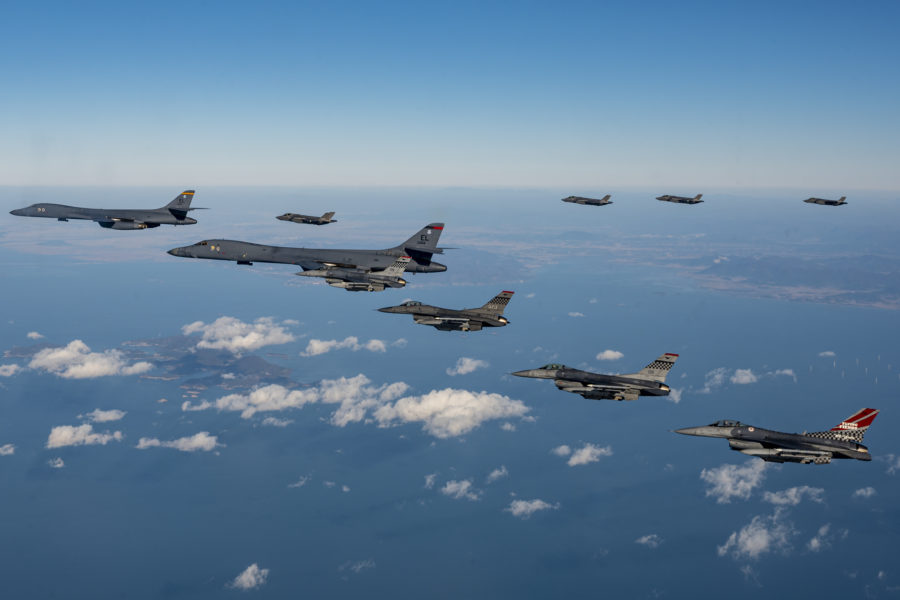The U.S. will step up its military exercises with South Korea to include expanded use of air assets such as fifth-generation fighters and strategic bombers, Secretary of Defense Lloyd J. Austin III said during a visit to Seoul on Jan. 31.
The comments are the latest effort by the U.S. to signal its commitment to South Korean security, amid increased concern from South Korean leaders after North Korea conducted a record number of ballistic missile tests in 2022. North Korea is expected to conduct another nuclear test in the coming months, according to Washington and Seoul.
That concern has led some in South Korea to suggest it should conduct nuclear drills with America or even pursue its own nuclear weapons program. During his visit, Austin reiterated the U.S.’s longstanding policy goal of denuclearizing the entire Korean Peninsula.
But under leader Kim Jong Un, North Korea, officially known as the Democratic People’s Republic of Korea (DPRK), has done the opposite, instead stepping up its missile testing, including long-range intercontinental ballistic missiles. Kim has also said North Korea will never give up its nuclear weapons, and North Korea recently flew drones that penetrated South Korean airspace.
In response to North Korea’s threats, Austin reiterated that the so-called “extended deterrence” America provides South Korea “includes the full range of U.S. defense capabilities, including our conventional, nuclear, and missile defense capabilities.”
South Korea, officially called the Republic of Korea, has sought reassurances from Washington regarding extended deterrence, including that the policy includes America’s nuclear capabilities.
“The U.S. commitment to the defense of Korea is ironclad,” Austin said at a joint press conference with South Korean defense minister Lee Jong-sup. “You heard us say that a number of times, but that’s just not a slogan; it is what we’re all about.”
After a lull in exercises between the two countries under President Donald Trump’s administration, the U.S. has started to ramp up drills with South Korea again, recently deploying fifth-generation F-22 and F-35s fighters, B-52 strategic bombers, and the Ronald Reagan carrier strike group in exercises.
While North Korean officials have accused those drills of being provocative, Austin and Lee said the drills were necessary and would only increase, both as a signal of U.S. and South Korean resolve and to maintain the two countries’ “Fight tonight” readiness motto.
“Over the past year, our two countries have made great progress in deepening our cooperation,” Austin said.
The U.S. and South Korea also pledged to hold a “tabletop” exercise in February on how they might respond to nuclear weapons use from North Korea—an event that the U.S. Nuclear Posture Review says would “result in the end of the Kim regime.” Austin said the exercise would ensure Washington and Seoul saw “eye-to-eye” on the issue.
In a joint statement, Austin and Lee said increased U.S. and South Korean military exercises have been productive, despite North Korea’s protests, and noted they will not let up. Further exercises will increase in “level and scale” to include more bomber and fighter missions.
America and South Korea pledged to “continue to deploy U.S. strategic assets in a timely and coordinated manner in the future,” referencing the productivity of the air exercises, according to the joint statement.
“You can look for more of that kind of activity going forward,” Austin said.
